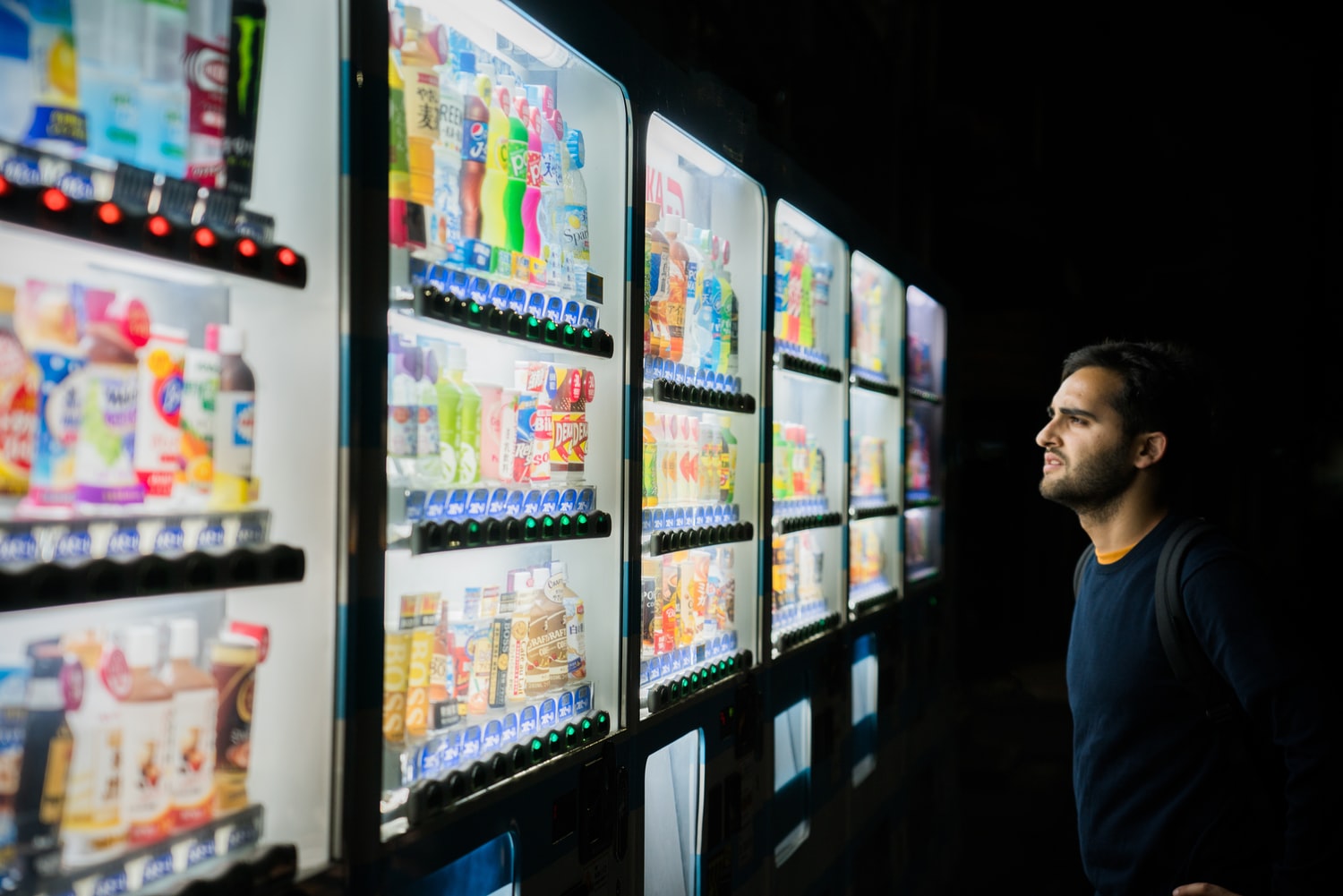
We like to believe we know what we want, but our present choices – even when made blindly – can have a big influence over our future preferences. Here’s how to use this fact to facilitate self-change.
An interesting study published in the scientific journal Psychological Science discovered that our choices in the present moment can influence our future preferences, even when that choice is made completely blind.
A lot of research shows that after you make a choice, you adjust your opinion to think better of it. We often engage in backwards rationalization so that we feel better about the choice we made.
Let’s say I’m choosing a drink at a vending machine. I scan my options really quickly and choose orange juice, only realizing after that I could’ve chosen a soda (which I really wanted more).
To rationalize the decision I’ve already committed to, I may so to my friend, “Actually, I’m in the mood for orange juice now – it’s probably better for me anyway!”
That can seem dumb and silly, but our minds do this backwards rationalization all-the-time in one form or another. It’s how we deal with the cognitive dissonance of choosing a “less than perfect” option.
Our emotions guide most of our choices – and our thinking just rationalizes why we made the choice.
If you ask someone if they’d rather go on vacation to Paris or Athens, they may rate them about the same – but if you force them to choose one, they’ll rate that city higher the next time you ask them which one they prefer.
Our minds defend our decisions vehemently. This is something to be aware of, but it’s also something that can be used to your advantage.
The Status Quo Bias
Have you noticed that when you go to the same restaurant, you always order the same thing?
Perhaps you choose that item because it’s genuinely your favorite (although how can you know that if you haven’t tried everything else on the menu)? Or maybe you choose that item because it’s just what you’ve always chosen.
In general, if a decision has worked for us in the past (or at least didn’t hurt us), we tend to repeat that decision again in the future. This is known as the “status quo” bias – it’s our general tendency to keep things the same.
If it isn’t broken, why fix it? In general, it’s safe to do what is familiar and not rock the boat too much.
At the same time, this status quo bias can keep us in self-fulfilling patterns and inhibit our ability to explore new choices and grow.
This is why I sometimes let other people make a choice for me, even if it’s something small like what new movie to watch, new band to listen to, or new restaurant to check out.
Listening to other people’s recommendations is a good way to “mix things up” and make sure I’m not becoming too stuck in my old ways.
By doing this, I give myself the chance to learn about new things to enjoy – perhaps even more than my old choices. You have to give your tastes and preferences a chance to grow, change, and develop.
Change Your Default Mode
We like to think our preferences guide our choices, but our choices can also guide our preferences. We can use this fact to our advantage.
One big lesson to takeaway from this is…
By changing your actions, you can change your preferences.
As a result, by acting in ways you don’t initially enjoy, you can eventually turn those choices into real wants and desires.
Generally, people adapt to a new “default mode” when they make a habit change.
For example, someone who eats fast food all the time will eventually become more “turned off” by it, if they adjust toward healthier eating habits; and someone who rarely exercises before will eventually “crave exercise” once they build it into a strong and steady habit.
Of course, getting to that new default mode requires time, effort, and persistence.
Before you create a new default mode, you’ll have to continuously go outside of your comfort zone and “do things you don’t want to do,” until they becomes things you DO want to do.
It’s similar to the opposite action technique for managing emotions – the main idea is that you have to first change your actions before you can change the flow of your emotions.
People sometimes fall into the trap of thinking they need to “feel good” before they can make a change, but sometimes you need to change your habits before you can “feel good.”
That requires a bigger perspective than just momentary feelings – it means recognizing the temporary discomfort you’ll have to withstand before you can reach a new level of comfort. That perspective alone can help you transcend pain of all types.
The beginning of self-change is the most difficult part, but once you get momentum it begins to become a natural part of your identity and how you see yourself.
You reach a point where the “status quo” bias is now working in your favor. You “exercise every day,” “meditate every day,” or “read every day” because that’s just what you do every day.
It’s your new default mode.
Enter your email to stay updated on new articles in self improvement:
